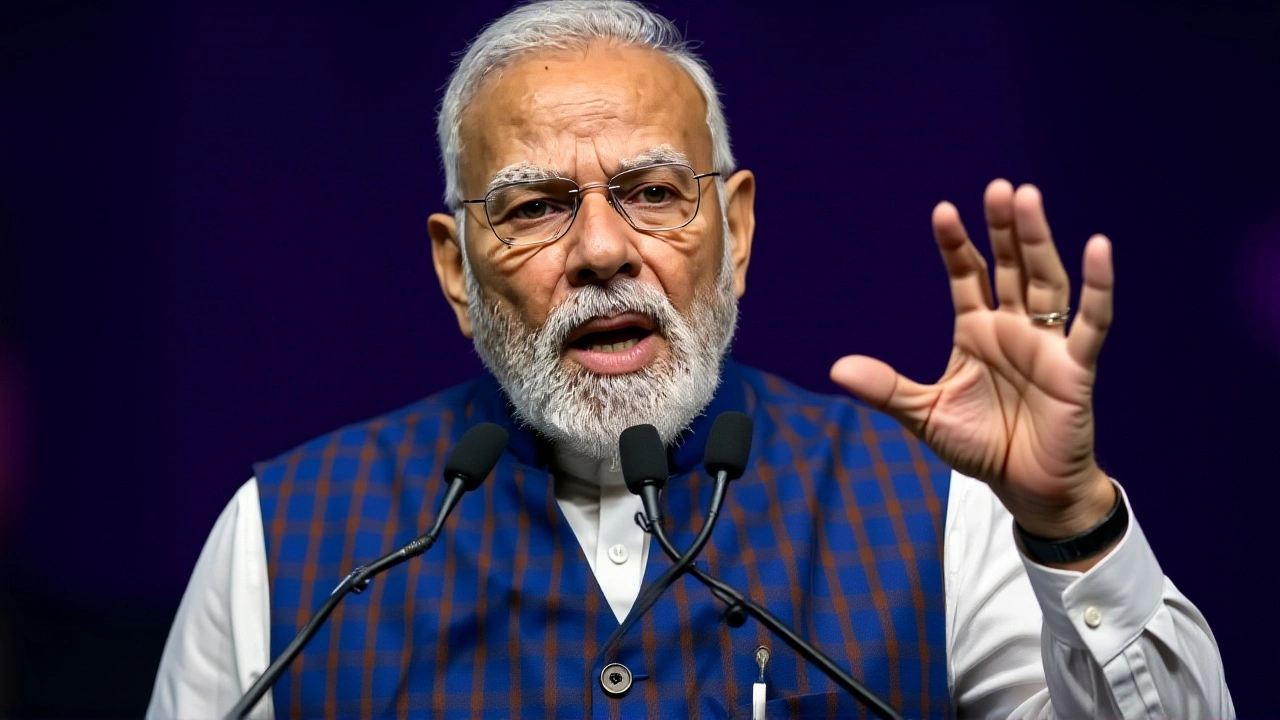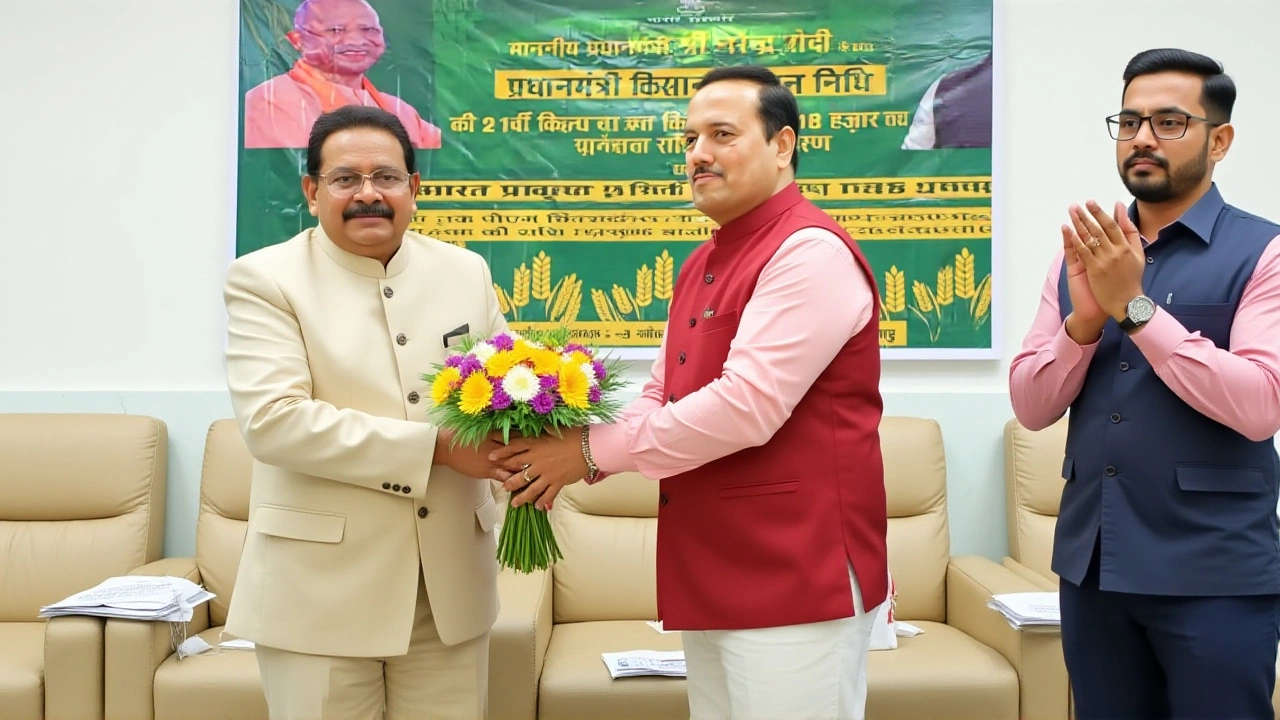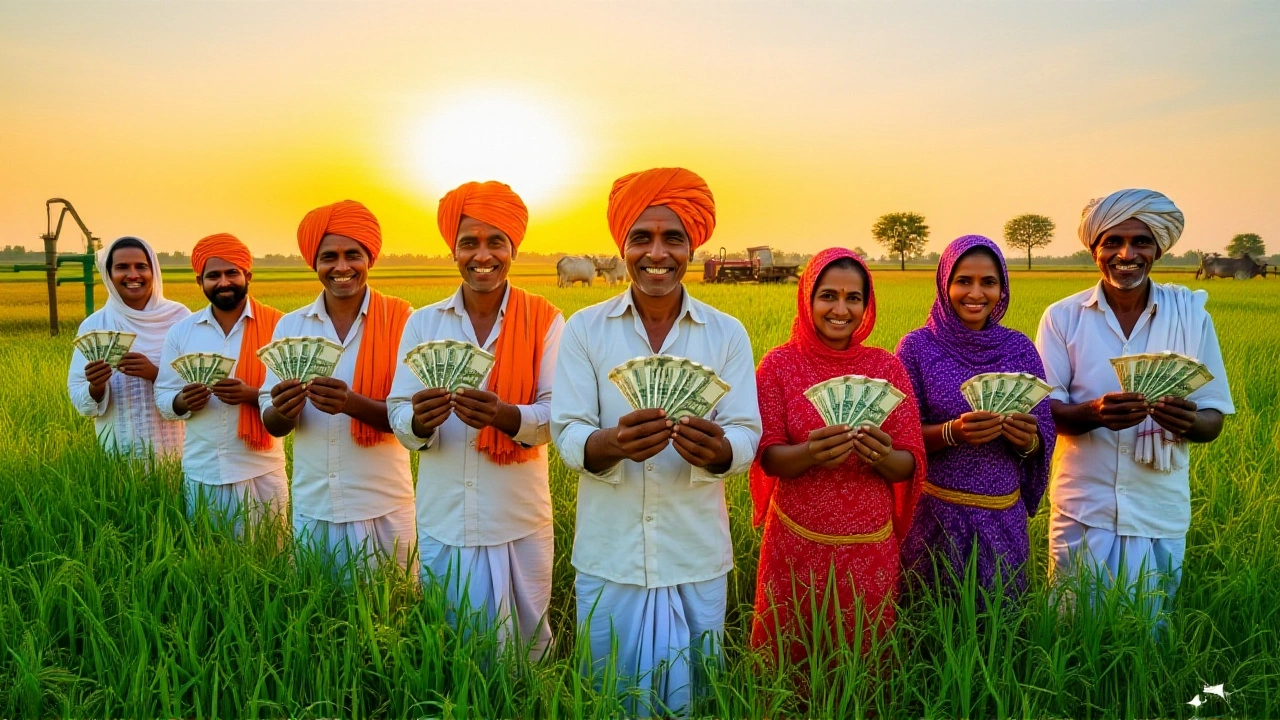On November 19, 2025, Narendra Modi launched the 21st installment of the PM Kisan Samman Nidhi Yojana from Coimbatore, Tamil Nadu, marking the transfer of ₹2,000 to 9 crore (90 million) eligible farmers. The Ministry of Agriculture and Farmers Welfare confirmed the funds were disbursed via Direct Benefit Transfer (DBT) by 2 p.m. that day, totaling ₹18,000 crore. But here’s the twist: despite the government’s claim of full coverage, hundreds of thousands of farmers across Uttar Pradesh, Bihar, and Maharashtra still haven’t seen the money in their accounts. Why? The answer isn’t bureaucracy—it’s broken systems.
Why the Money Didn’t Reach You
NDTV’s investigation on November 20, 2025, laid out five hard truths. First, if your eKYC isn’t completed—no biometric verification, no Aadhaar authentication—you’re invisible to the system. Second, land records remain a nightmare. Many farmers, especially in eastern India, still have pending land seeding or verification on the PM Kisan portal. Third, simple data errors: wrong bank account numbers, mismatched mobile numbers, or typos in Aadhaar details. These aren’t rare mistakes. They’re systemic.
Fourth, your bank account isn’t linked to your Aadhaar. Sounds basic, right? But over 12 million farmers still haven’t done this, even after multiple reminders. And fifth—most heartbreaking—your name simply isn’t on the beneficiary list. Not because you don’t qualify, but because the data never made it into the system. In Uttar Pradesh alone, where over 2.64 crore farmers are registered, nearly 1 crore still don’t have a Farmer ID, a new requirement issued by the state government in October 2025. Without it, no payment. Period.
The Ghost Beneficiaries
Behind the scenes, the government flagged 31 lakh suspicious beneficiaries—people who may have claimed benefits under false names, duplicate IDs, or even deceased relatives. These names are being purged. But here’s the catch: many honest farmers with legitimate claims are getting caught in the net. One farmer in Gaya, Bihar, told Amar Ujala: “I’ve been getting payments since 2019. This time, my account was blocked because my land records were updated last month. The system didn’t sync.”
Meanwhile, the timing couldn’t be worse. With Bihar’s assembly elections looming, the government delayed the 21st installment until after Diwali—a shift from previous years when payments came before the festival. Farmers who rely on this money for seed purchases, fertilizer, and school fees say the delay hurt their planning. “We used to count on this money in October,” said Suresh Kumar, a rice grower from Muzaffarpur. “Now we’re stuck waiting—and praying.”
Regional Disparities and Early Payouts
Not all states waited. Jammu & Kashmir, Himachal Pradesh, and Uttarakhand received their 21st installment in October 2025—after severe floods damaged crops. The central government fast-tracked payments there, acknowledging the emergency. But in the plains, where the crisis is slower and less visible, the system moves at a crawl. On August 2, 2025, during the 20th installment, nearly 4.3 million payments were frozen for similar reasons. The pattern is clear: the same errors keep repeating.

What Farmers Can Do Now
Don’t wait. Don’t assume it’s “just a delay.” Take action. The PM-KISAN helpline offers multiple channels: call 155261 or 1800-11-5526 (toll-free), or dial 011-23381092 from any phone. The Kisan Call Centre at 1800-180-1551 is also operational. You can email complaints to [email protected]. But here’s what no one tells you: the portal itself is your best tool. Log in to pmkisan.gov.in (though links aren’t allowed, you know where to go) and check your status under “Beneficiary Status.” Update your Aadhaar, bank details, and land records there—immediately.
Uttar Pradesh’s directive requiring a Farmer ID is now mandatory. Farmers without it won’t get future installments. The state government is running camps in block-level offices, but turnout is low. “People think it’s just another form,” said a district agriculture officer in Kanpur. “They don’t realize it’s the key to survival.”
The Bigger Picture
Launched in 2019, the PM Kisan scheme has transferred over ₹3.2 lakh crore to 11 crore farmers. It’s the largest direct income support program in India’s history. But its success hinges on data integrity—and right now, the data is leaking. The government claims 98% accuracy, but independent audits by the National Council of Applied Economic Research show a 15% error rate in beneficiary identification. That’s 1.65 crore farmers potentially excluded or misidentified.
This isn’t just about money. It’s about trust. When a farmer spends weeks waiting for ₹2,000—money meant to feed his family, pay his child’s tuition, or buy medicine for his wife—and the system fails him, it’s not a glitch. It’s a fracture in the social contract.

What’s Next?
The 22nd installment is expected in December 2025, just before the winter sowing season. The Ministry of Agriculture says it’s working on an AI-driven verification system to auto-match land records with Aadhaar and bank data. But until then, the burden falls on farmers to fix the system themselves. Meanwhile, state governments are being asked to integrate their own farmer databases with the central portal. No timeline has been given.
One thing is certain: if you’re a farmer and your money hasn’t arrived, you’re not alone. And you’re not powerless. The tools are there. The numbers are public. The system may be broken—but you can still fix your part of it.
Frequently Asked Questions
Why didn’t my ₹2,000 arrive even though I’ve received payments before?
Even if you’ve received past installments, your data may have changed—bank account, Aadhaar linkage, or land records. The PM Kisan portal requires re-verification every cycle. If your eKYC expired or your land records were updated after the cutoff date (October 15, 2025), your payment was flagged. Check your status on pmkisan.gov.in and update immediately.
What’s the difference between the PM-KISAN helpline and the Kisan Call Centre?
The PM-KISAN toll-free numbers (155261, 1800-11-5526) connect to the central ministry’s automated system and can check your payment status. The Kisan Call Centre (1800-180-1551) is staffed with live agents who can help you file complaints, guide you through portal updates, and escalate delays. Use the latter if you need human help.
Is the Farmer ID mandatory for all states?
Currently, only Uttar Pradesh has made the Farmer ID mandatory for PM Kisan eligibility. But the central government is pushing all states to adopt it by March 2026. If you’re in UP, Bihar, or Jharkhand, getting this ID is urgent. It’s free, available at your local agriculture office, and takes less than 15 minutes with your Aadhaar and land papers.
Can I get my money if my land is in my father’s name?
Yes—but only if you’re listed as a legal heir or joint owner in the land records. The system requires the beneficiary to be the landowner or an officially recognized cultivator. If you’ve inherited land but haven’t updated the revenue records, your payment will be rejected. Visit your tehsil office to get your name added to the Jamabandi before the next installment.
What happens if I miss the next installment?
You don’t lose eligibility. Missed payments are rolled over and paid in the next cycle, provided your data is corrected. But if you don’t fix your eKYC or land records by February 2026, you may be permanently excluded. The system doesn’t auto-recover—you have to act.
Are there any penalties for fake claims?
Yes. Under the PM Kisan Fraud Prevention Act, 2024, anyone found using false documents or duplicate IDs can face prosecution under the IPC Section 420 (cheating) and be barred from all central agricultural schemes for five years. Over 1.2 lakh cases have been filed since 2024. But again, honest farmers are often collateral damage in this crackdown.


Write a comment